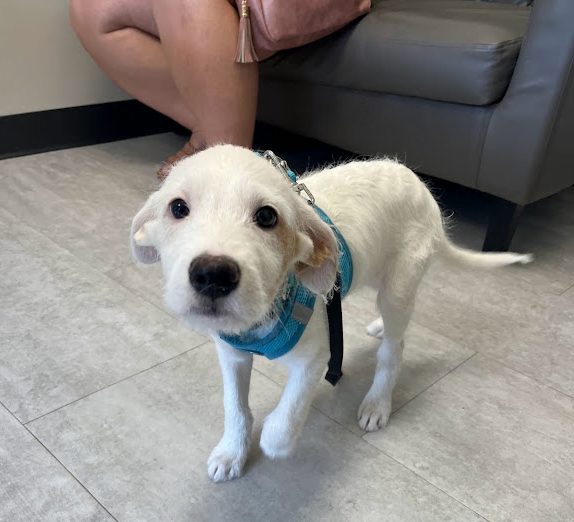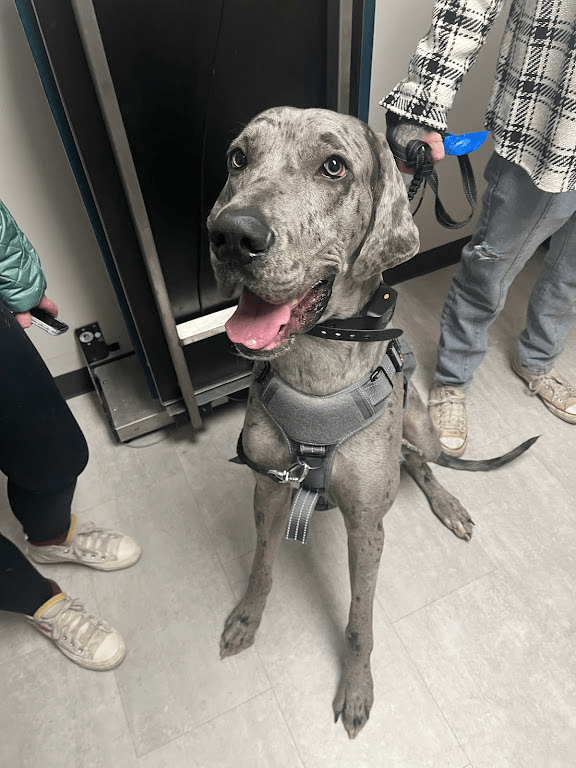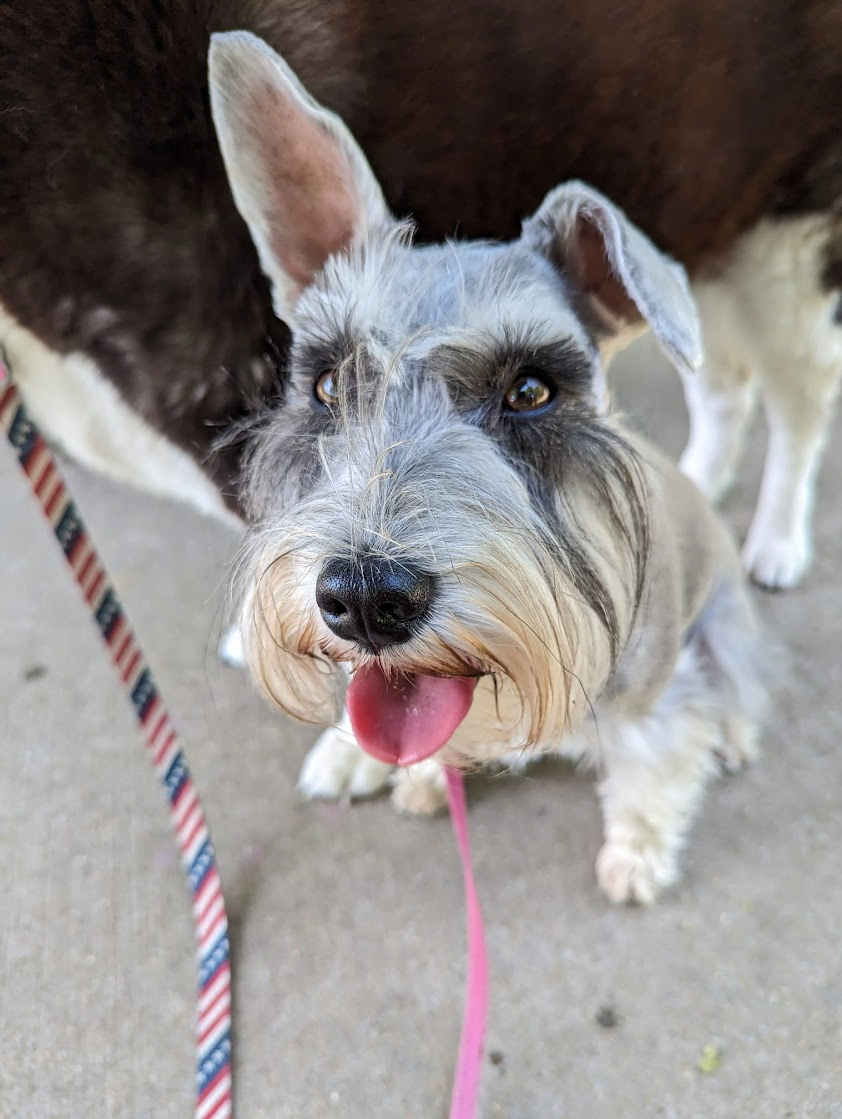
Surgical Procedures

Introduction
We prioritize your pet’s health and well-being with a range of surgical options that are not only of the highest quality but also affordable, setting us apart from many other emergency clinics. At our practice, we understand that your pet’s surgical needs are unique, and we are dedicated to providing exceptional care tailored to those individual requirements.
Whether it’s a minor procedure or a more complex surgery, we’re here to ensure your pet receives the best care possible, with a focus on their safety, comfort, and a speedy recovery. Your pet’s health is our top priority, and we’re honored to be your trusted partner in their surgical journey.
ACL/CCL
The cranial cruciate ligament (CCL), also known as anterior cruciate ligament (ACL) in humans, is found in the knee. When this ligament is torn, an abnormal shearing force occurs causing pain and arthritis over time. The lateral suture surgical technique places a false ligament on the outside of the joint to stabilize the knee allowing return of function and slowing the progression of arthritis. Pets must have strict rest post-op to allow scar tissue to form. Crate rest is the only way to ensure pets will lie still and rest.
A crate is required, and the pet must stay in the crate, other than to go to the bathroom, for the first 2 weeks. It is up to you to keep your pet calm and under control. It is the pushing off / accelerating forward/ jumping motion that can cause your pet to damage the repair. Even after the crate rest period, no exercise should be allowed for 6 weeks. Pets must stay on a short leash when outside and under control at all times to prevent above mentioned movements. Crate rest should be used for a longer period if your pet will not behave calmly out of the crate after the first 2 weeks.
Amputation - Leg
The most common reasons for amputations include growths, trauma, and dislocation. Pets are not vain and do not care how they look as long as they continue to receive love. Pets do very well with only 3 legs.
Amputation - Tail
The most common reasons for tail amputations include growths, trauma, and malformations.
Amputation - Toe
The most common reasons for toe amputations include growths and trauma.
Cherry Eye Removal
Animals have 3 eyelids. The same two lids (upper and lower) that we have, and a third that crosses from the nose side. This third eyelid contains a gland that produces tears to keep the eye moist. When this gland becomes inflamed, it swells and has the appearance of a cherry sitting in the corner of the eye. The inflammation is usually caused by infection or irritation from hair, dust, etc.
It is important to keep the hair trimmed around the eyes to help decrease irritation. To remove a cherry eye, we remove a portion of the gland so that enough gland is preserved to still make tears but not enough to swell outside of the pocket it normally resides in. It is extremely rare for dry eye to occur after a cherry eye repair, but if it occurs, moisturizing drops will be needed long term.
Dewclaw Removal
Dewclaws are residual thumbs. The dewclaw nails do not make contact with the ground and tend to grow around and back into the paw if they are not kept trimmed. They can be found on either the front or rear paws, attached by bone or loosely hanging. Not all dogs have dewclaws. They are most often removed due to nail entrapment, infection, or if owners are unable to keep the nails trimmed.
Entropion
Entropion is a rolling in of the eyelids leading the lashes to rub on the eyeball. This can cause minor irritation up to severe corneal ulcerations. The number of affected lids depends on your pet’s anatomy. A minor nip-tuck of the eyelid will allow the lid to unroll and relieve the irritation to the eye.
It is best to slightly overcorrect the lid so that any future irritation will not allow the lid to roll back in. You may see a bit of pink in your pet’s eye once the lids are corrected. This is simply the conjunctiva around your pet’s eye. Sometimes visibility of the pink area will subside as the swelling goes down, other times you may continue to see the pink area. This is cosmetic only and will not negatively affect your pet.
Growth Removal
Growths can appear anywhere on your pet’s body and can grow from many different cell types. Some are slow growing and some can grow quite quickly. Either way, any abnormal lump or bump should be checked by your veterinarian. A needle biopsy (a very small sample taken with a needle) can help determine the type of growth and if removal is indicated.
If a larger sample is needed, or you simply want the growth removed, we can remove the growth and send the entire piece of tissue to the lab to review. If the cell type is unknown prior to surgery or if the growth is suspicious for cancer, we will make every effort to achieve clean margins of skin around the growth. Therefore the incision will appear larger than the actual growth was.
There are some areas of the body where the skin will not allow for clean margins and only a debulking of the mass can be achieved. Drainage tubes and bandages may be used post- op depending on the location and size of the growth. Instructions for care will be sent home with you. Please keep in mind that growth removal pricing is based on the size of the incision necessary to remove the growth and hopefully achieve “clean margins,” not on the size of the growth itself. There are some areas of the body where the skin will not allow for clean margins and only a debulking of the mass can be achieved.
If the growth was deemed benign prior to surgery, removing this extra margin of skin will not be necessary. If your veterinarian has not determined this, we will attempt to achieve “clean margins” meaning we will attempt to get as much as the mass off with as much visually healthy tissue as possible so if it is something scary like cancer, we get as much of it as possible.
Enucleation
Enucleation is removal of the eyeball. There are many reasons that the eyeball needs removal. Trauma, glaucoma, and cancer are the 3 most common reasons. When the eye is removed, the lids are closed and sealed. Hair will regrow over the area and the skin will usually lie flat. Pets compensate well with only one eye.
Perineal Urethrostomy (PU)
A PU is the medical term, in cats, for shortening and widening the penis to make a larger opening for your cat to be able to urinate through to help decrease the chance of repeat urinary blockages. Medical management and working closely with your veterinarian after surgery is imperative


Pyometra
Pyometra is a life threatening infection of the uterus. If left untreated, the uterus can rupture and your pet will die. Early spaying is recommended to prevent this life threatening condition. Pyometra most commonly occurs in an unspayed pet within a few weeks of your pet being in heat.
Splenectomy
Splenectomy is removal of the spleen. The spleen is an abdominal organ involved in the production and removal of blood cells and forms part of the immune system. Other organs take over these functions if the spleen is removed. The most common reasons we remove spleens are due to trauma (splenic rupture), cancer, and splenic torsion (twisting of the spleen cutting off blood supply). Some patients may require blood transfusions before, during or even after a splenectomy.
Stomach Tacking
Stomach tacking is a preventative surgery to reduce the chance of bloat. Bloat is a surgical emergency to untwist the stomach that has been distended with gas and fluid. It occurs when a deep chested dog’s stomach fills with fluid or food and then twists and begins to distend with gas. When the stomach twists, it pulls the spleen along with it and can cause shock and then death. When the stomach is tacked preventatively, it will be unable to twist, therefore reduce the chance of the life threatening emergency known as bloat.
Vulvoplasty
Excessive skin folds around the vagina can lead to chronic skin irritation and urinary tract infections. Removing this excess skin through surgery allows air to circulate and keeps debris from getting trapped between skin folds. This makes for a much happier and more comfortable pet.
Wound / Laceration
Repair Wounds have many causes, sizes, and locations. They are usually treated by cleaning, debriding (removal of damaged tissue), and closing/suturing the wound. A drain may be placed in a wound if there is concern for fluid build-up under the skin. Instructions for care will be sent home with you.
Annual Exam
Whether your pet is a youngster, a “senior citizen,” or any age in between, wellness examinations provide an excellent opportunity for us to conduct a thorough physical examination. At the visit we will discuss your pet’s behavior, appetite, weight, exercise habits, along with any diagnostic testing and vaccinations that may be due. This information will help us identify medical problems and any other issues that can affect your pet’s health and quality of life. A wellness examination is also your chance to have us address your questions or concerns about your pet.
Required PreAnesthetic Bloodwork
The bloodwork we perform shows us basic organ function values to help make the safest choices for anesthesia.
Spay
Spay is the term used for removal of the uterus and ovaries. This procedure is usually recommended for young pets as a preventative measure, not only to prevent pet overpopulation, but for many medical reasons as well.
Pyometra (infected uterus, a life threatening condition), uterine and ovarian cancer, prolapsed uterus or vagina, dystocia (puppies trapped in the birth canal requiring emergency c- section), and breast cancer (85% higher incident in unspayed females). This list contains the most common medical concerns in unspayed females that we see on a daily basis.
Neuter
Neuter is the term used for removing the testicles in a male pet. The scrotal sac is retained and will usually shrink on its own over time. If you would like to have the scrotal sac removed, please discuss prior to scheduling with us, the fee for a scrotal ablation is posted above. This procedure is recommended for young pets as a preventative measure, not only to prevent pet overpopulation, but for many behavioral and medical reasons as well.
Retained testicles, testicular cancer, testicular torsion, prostate cancer, benign prostatic hyperplasia, perineal hernias (due to straining from an enlarged prostate), and increased incidence of UTIs and urinary bladder stone formation. This list contains the most common medical concerns in unneutered males that we see on a daily basis.
Cryptorchid means a retained testicle that has not fallen into the scrotal sac. When this occurs, it is found either in the inguinal region or in the abdomen. No matter where the testicles are found, they are both removed when your pet is neutered.
Dental Cleaning
A dental cleaning visit will include a thorough dental examination, teeth cleaning, and polishing to remove the tartar and periodontal disease-causing plaque. This is done while your dog is under general anesthesia. Once anesthetized, your veterinarian with the help of veterinary assistants will thoroughly examine the mouth, noting abnormalities in the medical record. A dental probe will be used to evaluate gum bleeding and periodontal pockets where food can accumulate and decay if not properly cared for.When periodontal disease is advanced, it may not be possible to save the badly affected teeth, which may need to be extracted either during the procedure or at a later time.
